Triangular shaped garden ideas – landscape designers share 9 ingenious ways to redesign your corner plot
Expert tips for planning, planting and finessing a triangular shaped plot, so you can savour the space year round
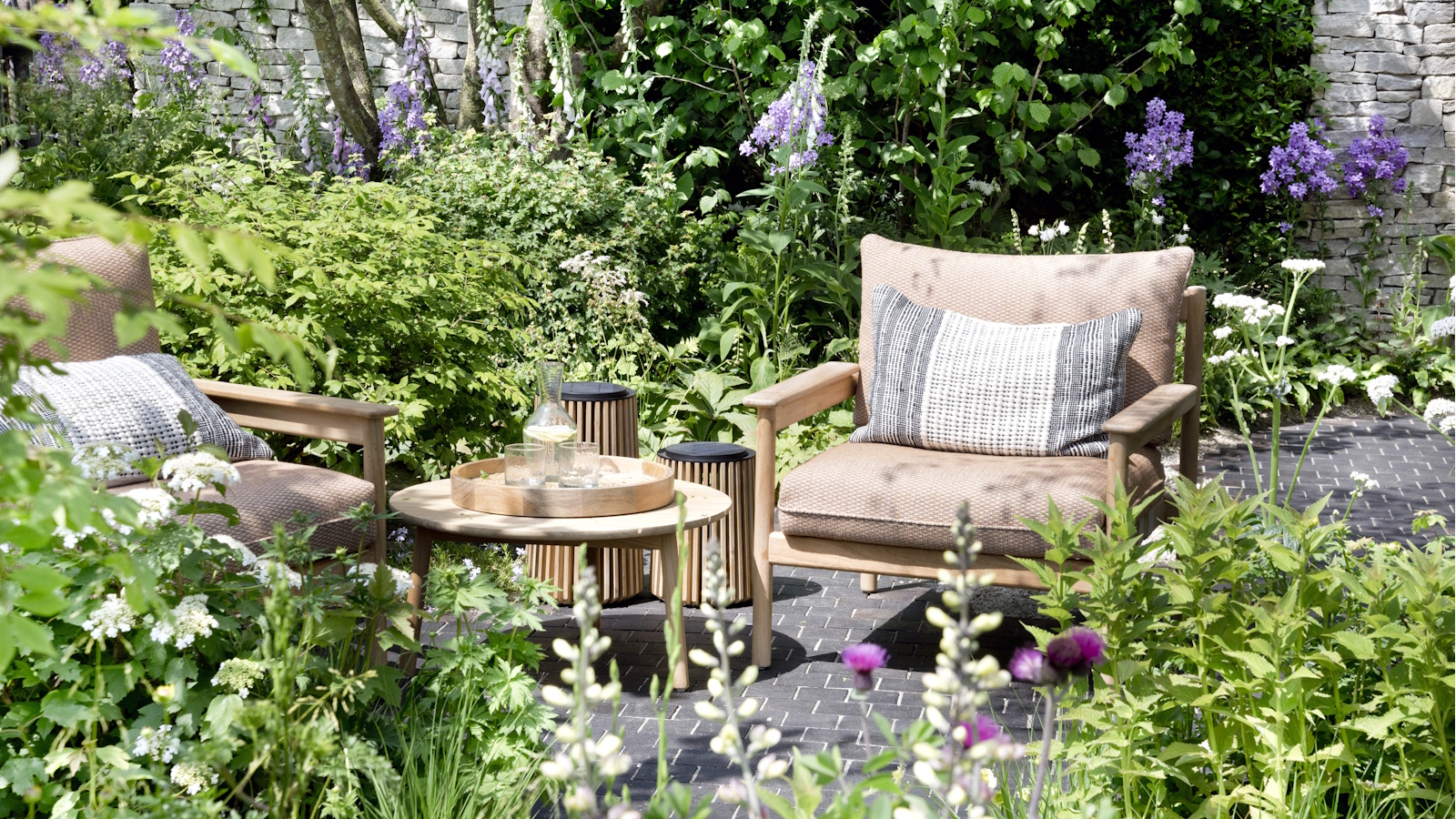
- Bring statement trees centerstage
- Embrace round organic forms
- Soften the edges of beds and borders
- Go for a corner seating area
- Go with a geometric approach
- Use color to shape the space
- Use the angular space wisely
- Entice with a water feature at the furthest point
- Vary the level for maximum interest

If you are struggling to make the most of a tricky outdoor plot, then these triangular shaped garden ideas can prove hugely helpful. Encouraging you to see your patch in a whole new way, they will inspire you to take action and amplify its distinctive features with confidence while disguising any less than lovely areas.
With converging boundaries radiating from the property that culminate in an angle, these triangular or wedge-shaped gardens can feel austere and unwelcoming. Often difficult to arrange furniture in, with boundaries that dominate and a rather severe and unnatural focal point at the far end, they can prove daunting to plan and plant.
Fortunately, there are plenty of tried and tested design rules to tap into, that can help you handle your awkward shaped garden with ease. Here we share our favorites from leading landscape designers.
9 triangular shaped garden ideas to try
Knowing what you want from your triangular shaped garden is the key to a successful design. 'You can choose to lean into the triangular shape, or to obscure it. Your chosen approach will depend on your preferred style,' says landscape designer Kevin Lenhart.
Bring statement trees centerstage
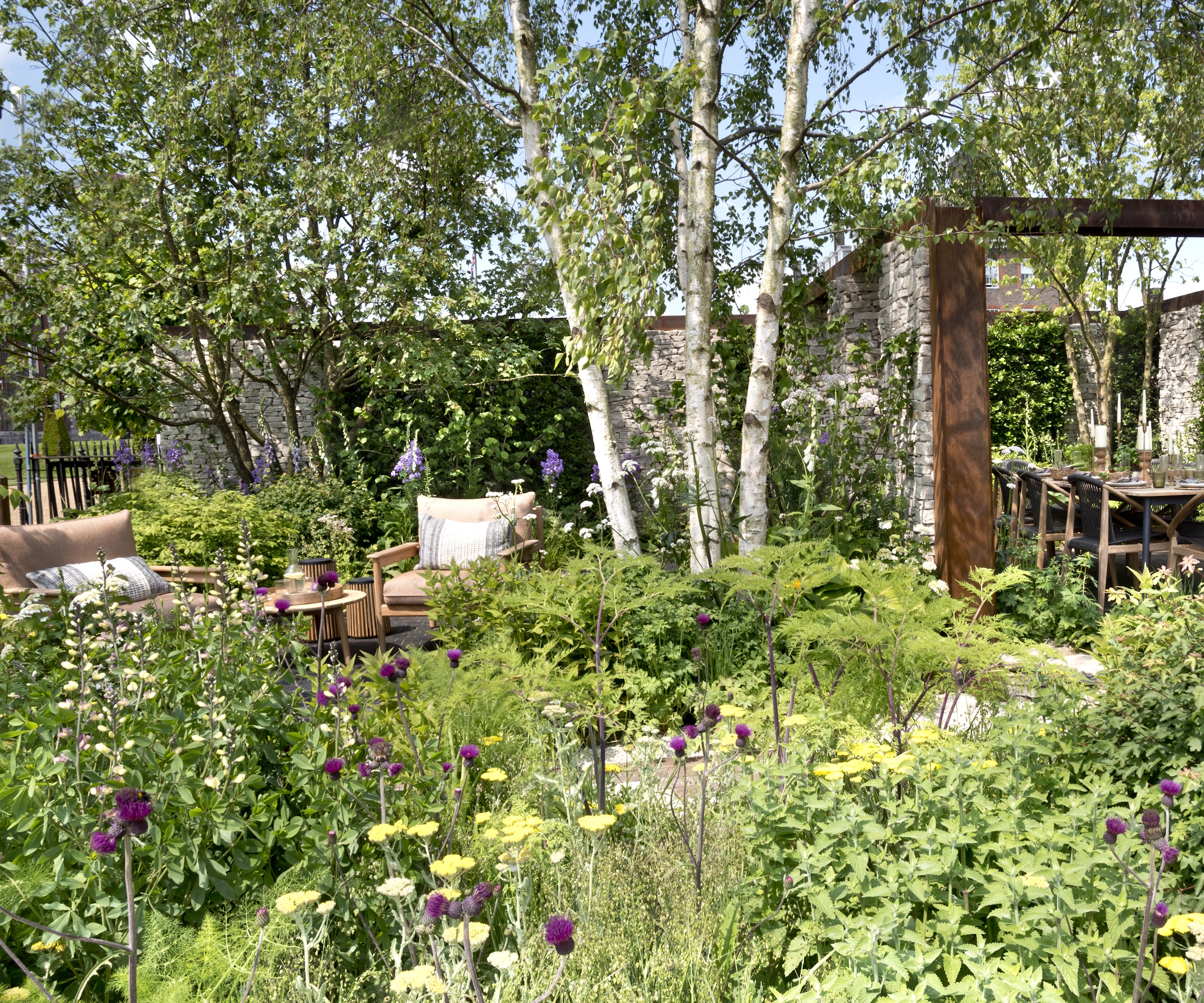
Distracting the eye away from converging boundaries is a simple and effective way of rebalancing a plot’s triangular shape. A central focal point, especially if it has a vertical outline, will instantly command attention which is why trees and shrubs with a vertical growing habit are ideally suited.
'Depending on available space, introducing focal trees or shrubs, positioned in response to the edges of planted masses more so than the edges of the triangular space, can further help to pull attention away from the triangular form,' explains Kevin.
Standard and multi-stemmed trees with attractive colored, or textured bark, are obvious contenders, and for added designer flair, you can choose to mirror their key characteristic in the surrounding borders, furniture or planters.
Ghostly white Himalayan birch - Betula jacquemontii - makes a dramatic statement against dark evergreen yew or holly hedging while the glossy claret red bark of the Tibetan cherry – Prunus serrula is amplified by later summer borders bursting with burgundy dahlias, amaranthus and sanguisorba.
For more inspiration check out the best fast growing trees for privacy and these statement tree ideas.
Embrace round organic forms
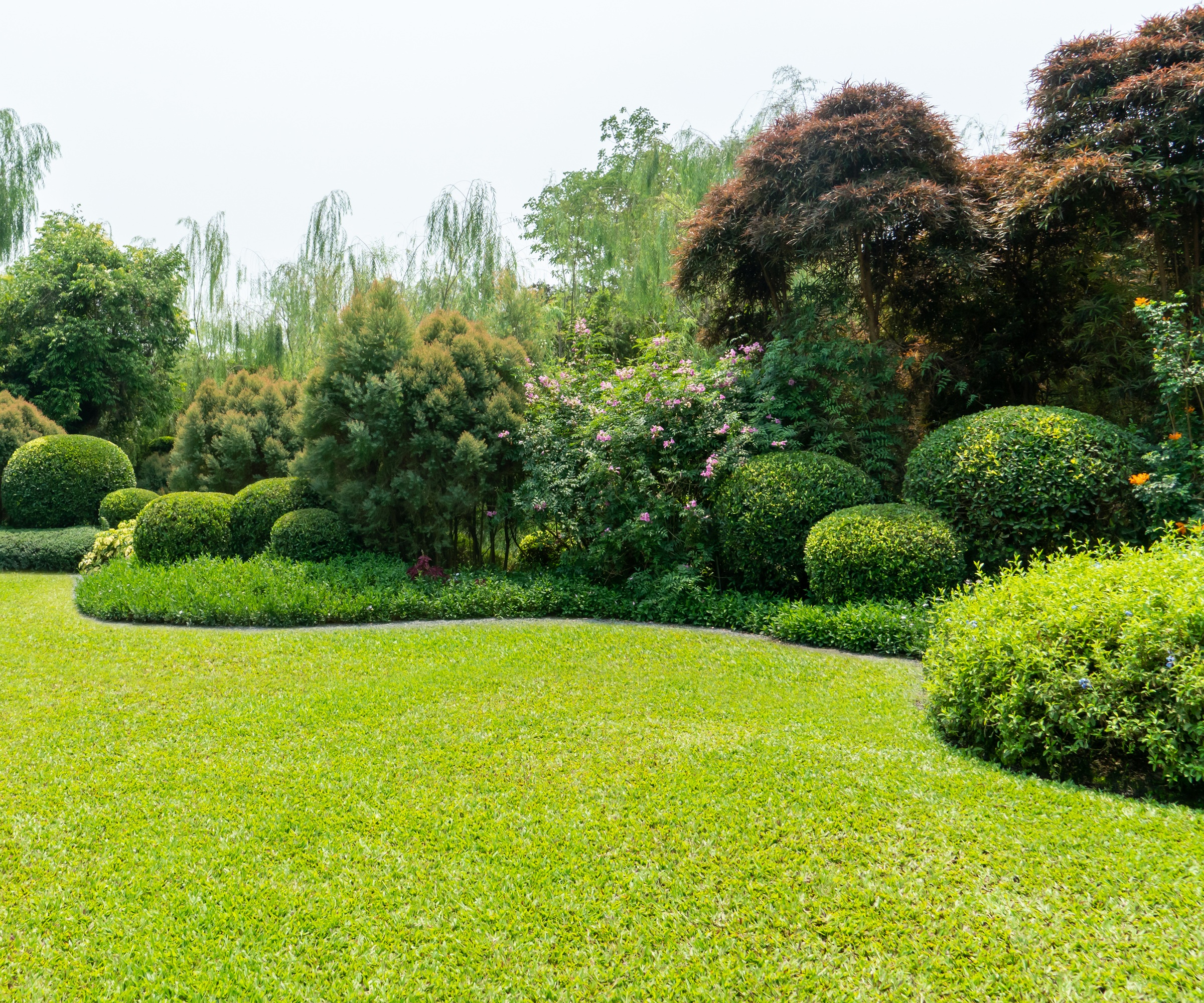
The strong converging lines of a triangular plot, particularly if it is compact and level, can appear harsh and far from inviting. Unless you happen to like the rather dramatic look, you will need to find ways of dividing up the space or, at least, softening its impact.
'More organic aesthetics make it easier to obscure the triangular nature of a space,' says Kevin. 'Generally speaking, you can utilize organically shaped masses of plants to introduce curving, blurry forms that pull the eye away from the triangular form of a planting space.'
Layering the some of the best landscaping shrubs informally down either side of the garden, can help create movement and gently pull the gaze into the centre of the plot. Opt for a mix of evergreen and deciduous species with contrasting foliage. Winning combinations include Purple Japanese barberry, hebe ‘Purple Shamrock’ and Japanese skimmia with its deep red flower buds that appear in fall.
Or why not try clipping black stemmed pittosporum tenuifolium variegatum and dark green box leaf holly into mounds and contrast with the black upright stems of deciduous cornus alba ‘kesselringii’.
We like the look of these ClassicCut Hedge Shears from Amazon to make light work of the job.
Soften the edges of beds and borders
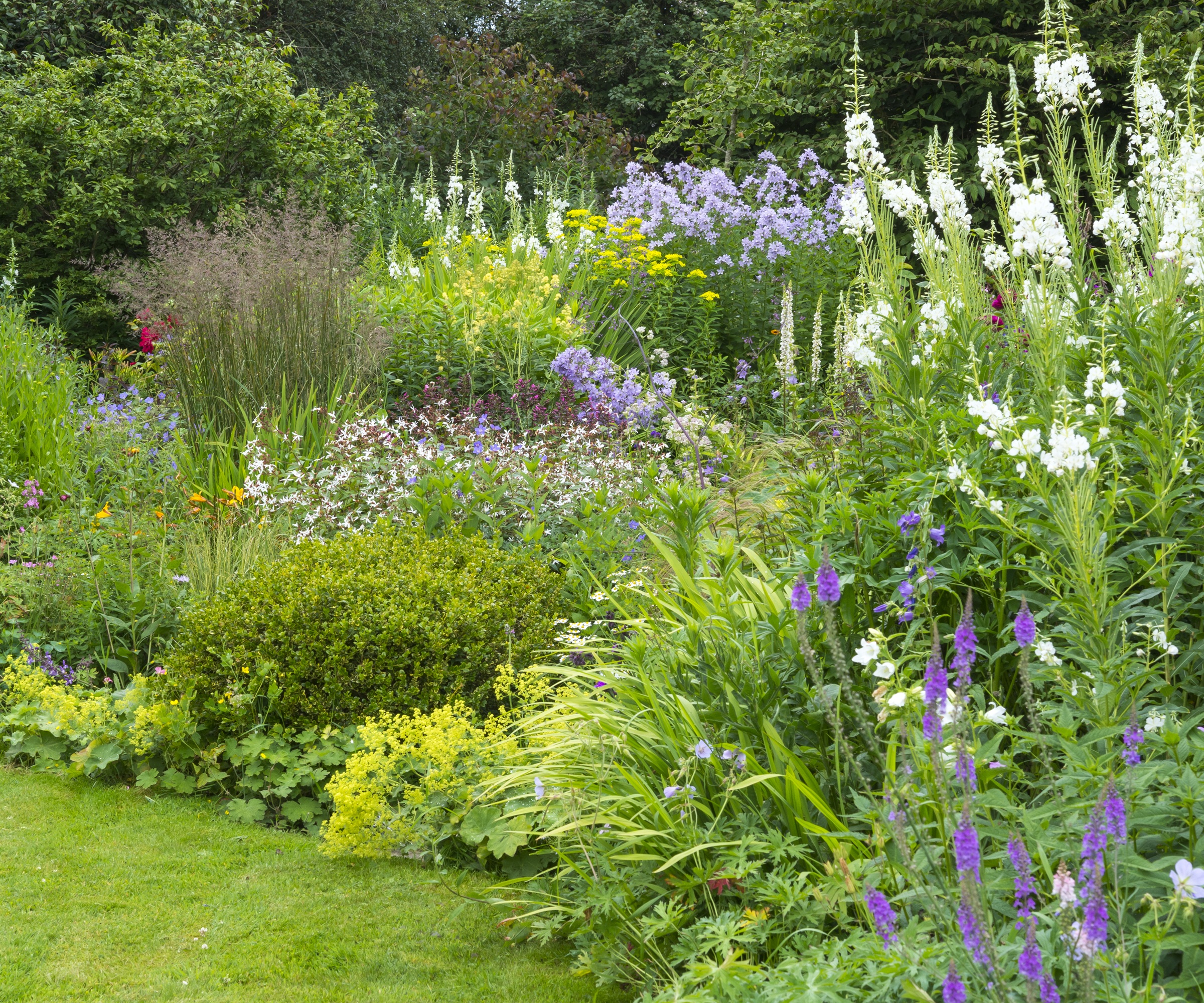
Nothing reinforces the dramatic and constrictive nature of a triangular plot than ramrod straight borders that hug the perimeter.
Create a much more welcoming and relaxed space by varying the depth of the planting beds, or ditching them altogether and allowing the planting to weave into a centrally paved area with castellated edges or a free flowing gravel garden.
'Allowing plants to spill over the edge of the planting area helps to blur the edges and obscure the triangular form of the planting area,' adds Kevin.
'Using plants with a bit of height near the edges, say knee to lower thigh height, essentially elevates the visible edge of the planting area a few feet above ground, and converts it from a crisp hardscape edge to an undulating, irregular edge defined by the form of the plants along the perimeter.'

Kevin Lenhart is Yardzen's Design Director. He received a M.S. in Landscape Architecture from the University of California, Berkeley. Prior to Yardzen, he worked for San Francisco's Department of Public Works and for WRT. A father of two young sons, he's passionate about outdoor spaces that are beautiful, do good for the planet, and get families outside.
Go for a corner seating area
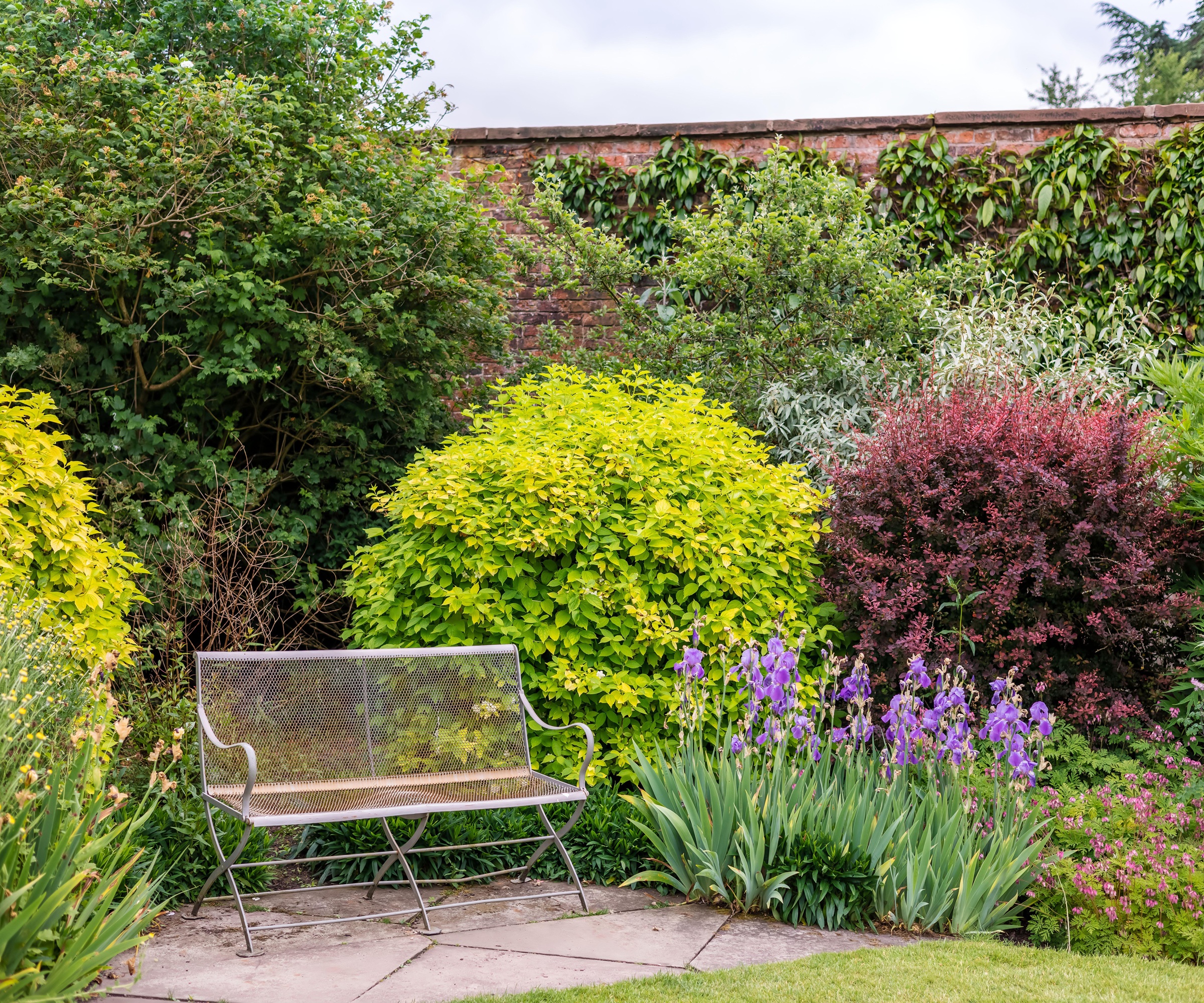
The converging lines of a triangular plot are naturally suited to a cosy seating spot. Nestled between garden boundaries with an expansive view of the plot to enjoy, there’s vast potential to create a restful area to either proudly survey your land or sit in quiet seclusion.
'We are naturally drawn to want to see what lies around the path ahead,' says Landscaping expert Joe Raboine. 'In biophilic design, this idea is called modes of mystery, and can add fun and excitement to a space, as it draws the guest through the garden. Rounding a corner and seeing a beautiful secret sitting space is something we delight in.'
Depending on the scale of the plot and how shady, sunny or exposed this area is, you can choose from a roomy curved bench that spans the garden’s furthest point, two sofas positioned at right angles backed by walls or fencing or, perhaps, a hanging teardrop cocoon chair (from Amazon) for dreaming in.
A corner bench such as this wooden design from Walmart would look stunning surrounded by scented climbers or beneath a corner pergola such as this Vinyl Alcove Corner Pergola from Walmart.
Go with a geometric approach
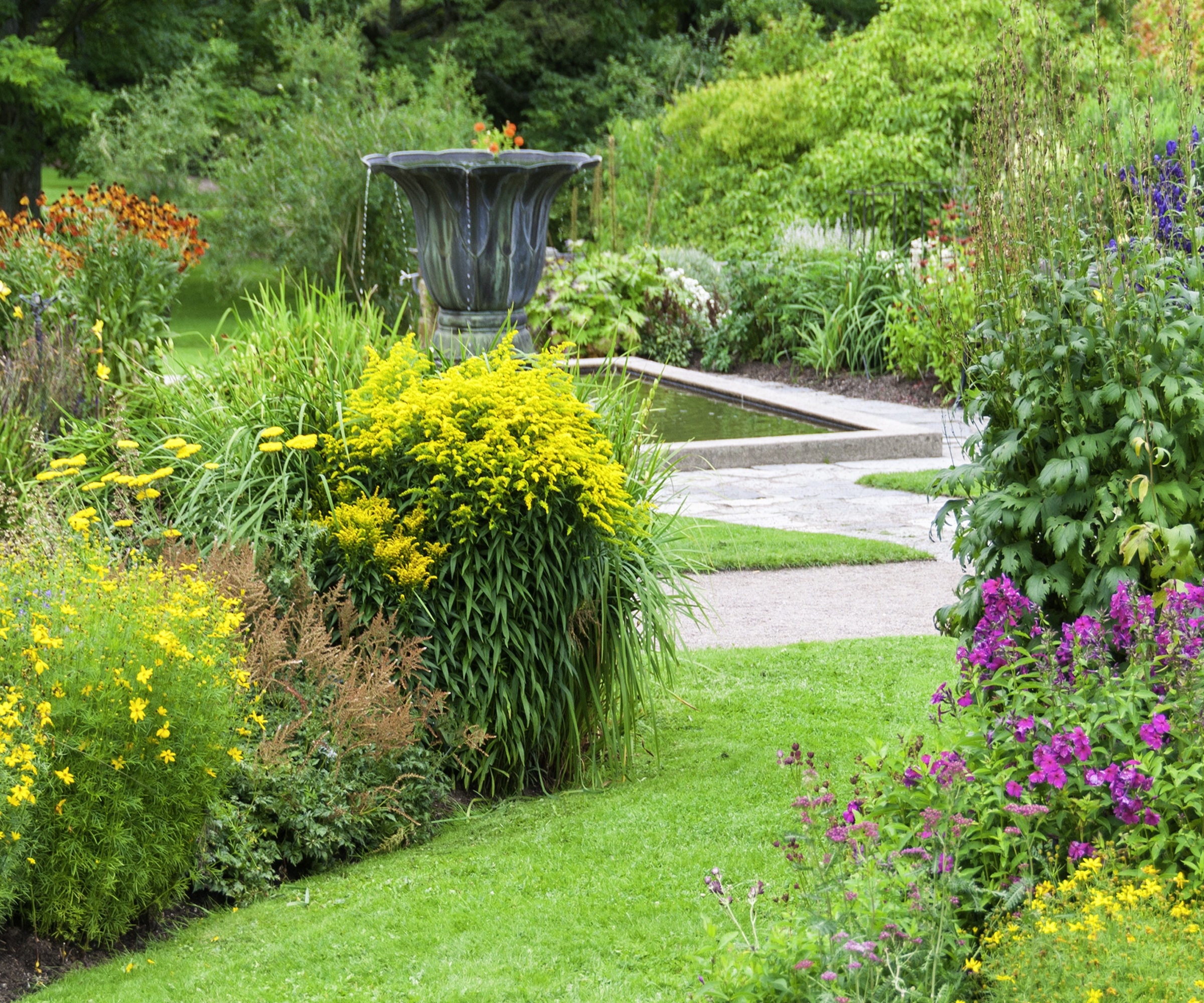
Take a cue from your plot's dramatic footprint and incorporate other geometric shapes into its layout. It’s not a look for the faint hearted, but it will exude class, elegance and prove timeless too.
'Rely on classic geometry to inform the design. Overlay a square or a diamond on top of the triangle and allow the leftover space to be your planting,' says Landscape Architect Stacilyn Feldman. 'This will help define the most usable space and create interest in the potential lost areas.'
Use color to shape the space
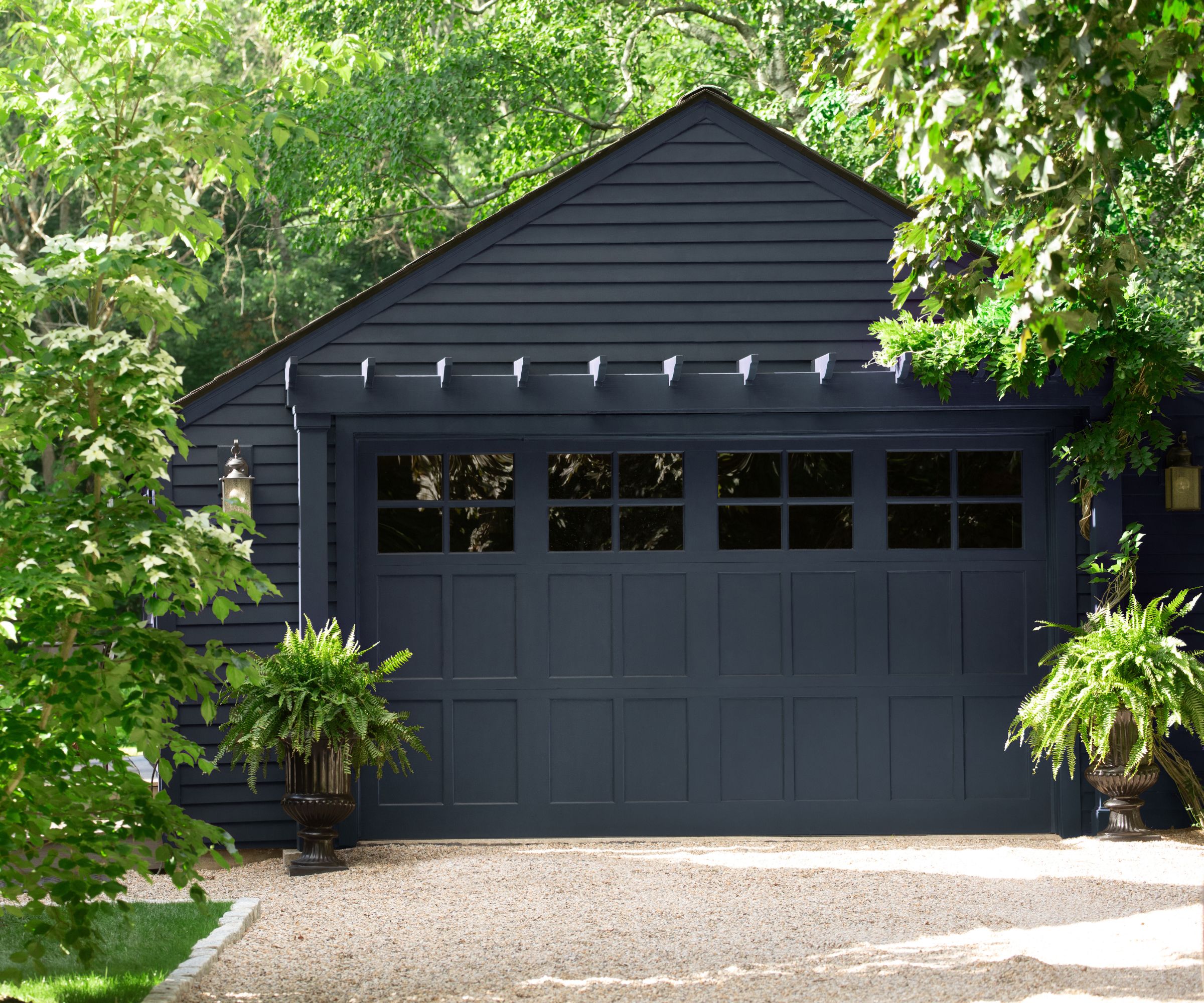
Balancing the proportions of a triangular plot can be tricky. Often wider than they are deep, these backyards can easily feel overpowering. While there are plenty of garden design tricks for visually expanding the space it’s important not to undervalue the effect color can have.
'Color can help push boundaries back visually,' explains Stacilyn. 'Paint your fence a dark color - think charcoal gray or dark navy blue tones - or use darker tones of vegetation farther away and lighter tones closer to the viewer.'
Looking for inspiration? then be sure to delve into Glidden's Exterior Paint range at Walmart, which includes shades such as Black Magic, Goblin Gray and Night Rendezvous.
Use the angular space wisely
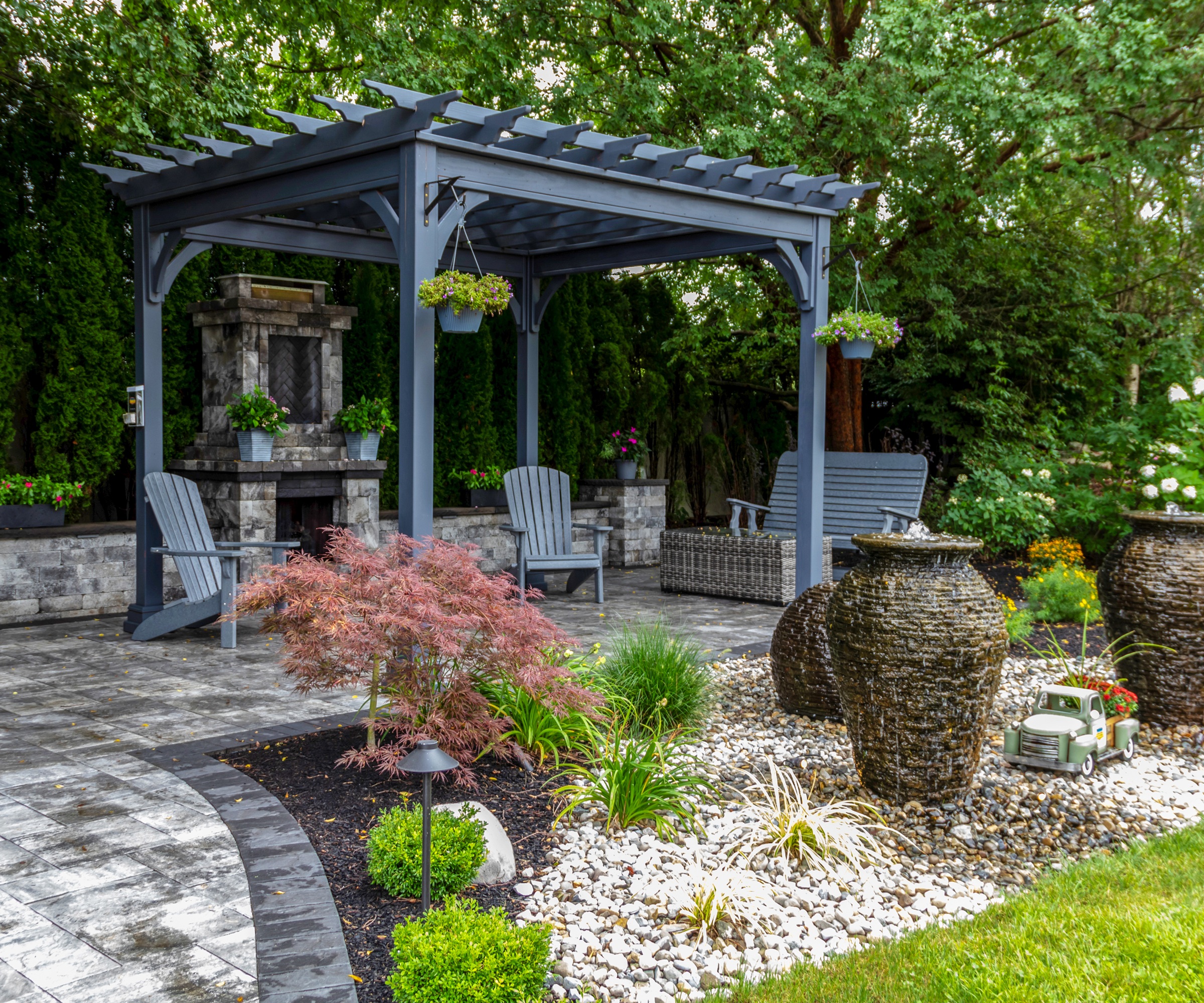
With a tapering footprint, triangular yards can prove tricky to plan. Here, balancing practicality with a beautiful aesthetic is even more challenging due to the diminishing space and the exaggerated perspective it creates. There are some simple design rules to follow though, which can help you design with confidence.
'For triangular shaped gardens, the largest part of the shape will most likely open towards the house so look at the space and consider how it relates to the house, windows and doors. Then think, how will you use the space?' advises landscape designer Andrea Scharff.
'You want to create a beautiful yet usable space. I recommend keeping the largest space open, with either lawn or gravel and create a series of garden rooms for dining, lounging and cooking divided up with beautiful landscaping around the exterior of the open space.'
To keep the space feeling restful and uncluttered Andrea also suggests to, 'use a maximum of five plant varieties and two hardscape varieties to keep the space harmonious'.
Entice with a water feature at the furthest point
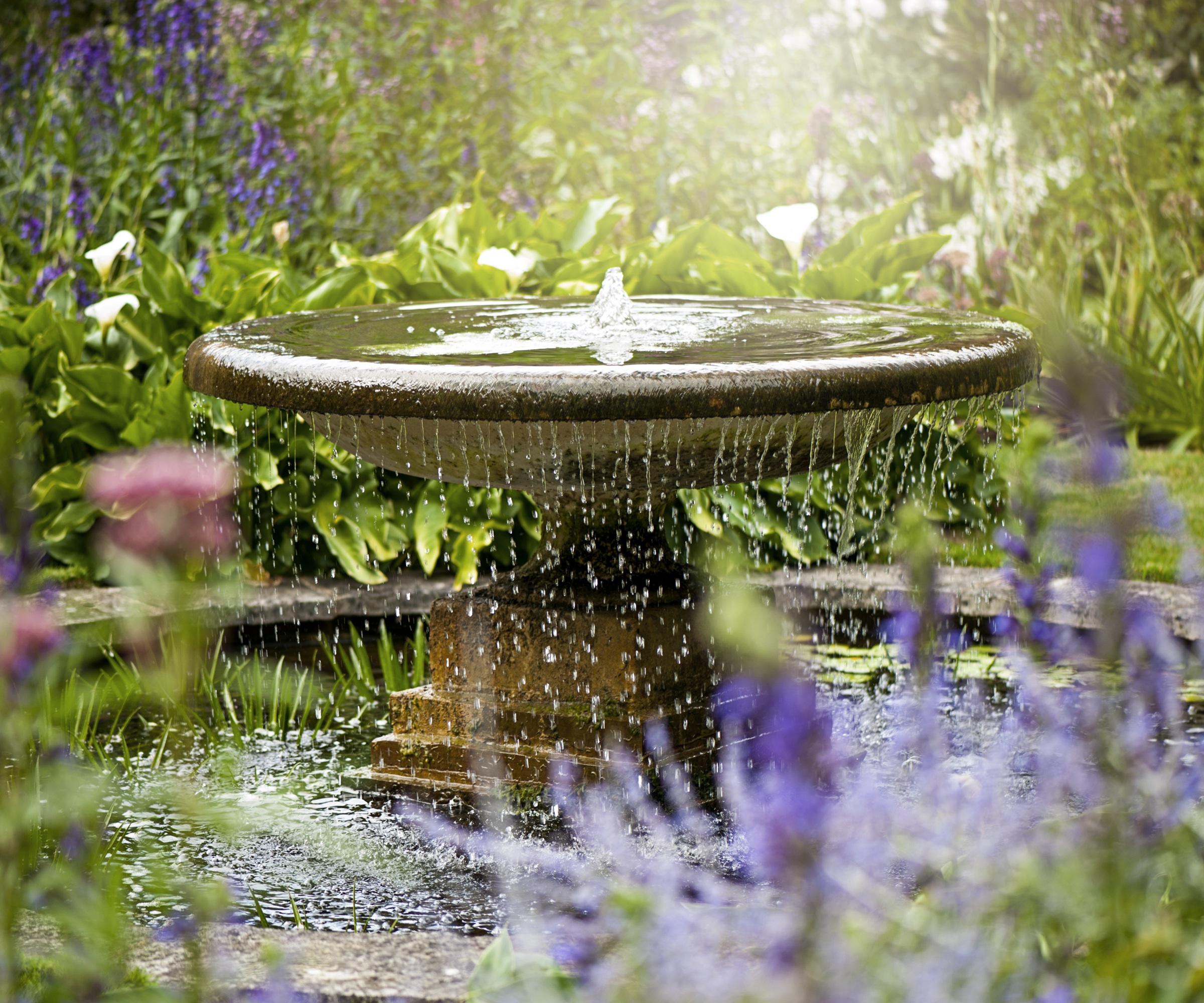
The lure of gently babbling water is a powerful charm in any outside space. In a triangular plot it can encourage exploration to the garden’s furthest point and provide a particularly magical experience if surrounded by sensory and romantic planting.
'Consider some visual anchors,' says Joe. 'These could be features like fountains or bird baths and can be placed at key corners or path intersections as well as the far end of the plot.'
Imagine following a meandering gravel pathway, passing flowering shrubs, deliciously scented roses to be greeted by a simple water cascade, overspilling container or elegant wall mounted waterspout.
A smartly paved clearing showcasing a tiered fountain can be a majestic and spectacular garden focal point and a natural culmination for a tricky triangular plot. Heighten the formal feel by surrounding the focal point with a low clipped yew hedge and fragrant lavender.
Vary the level for maximum interest
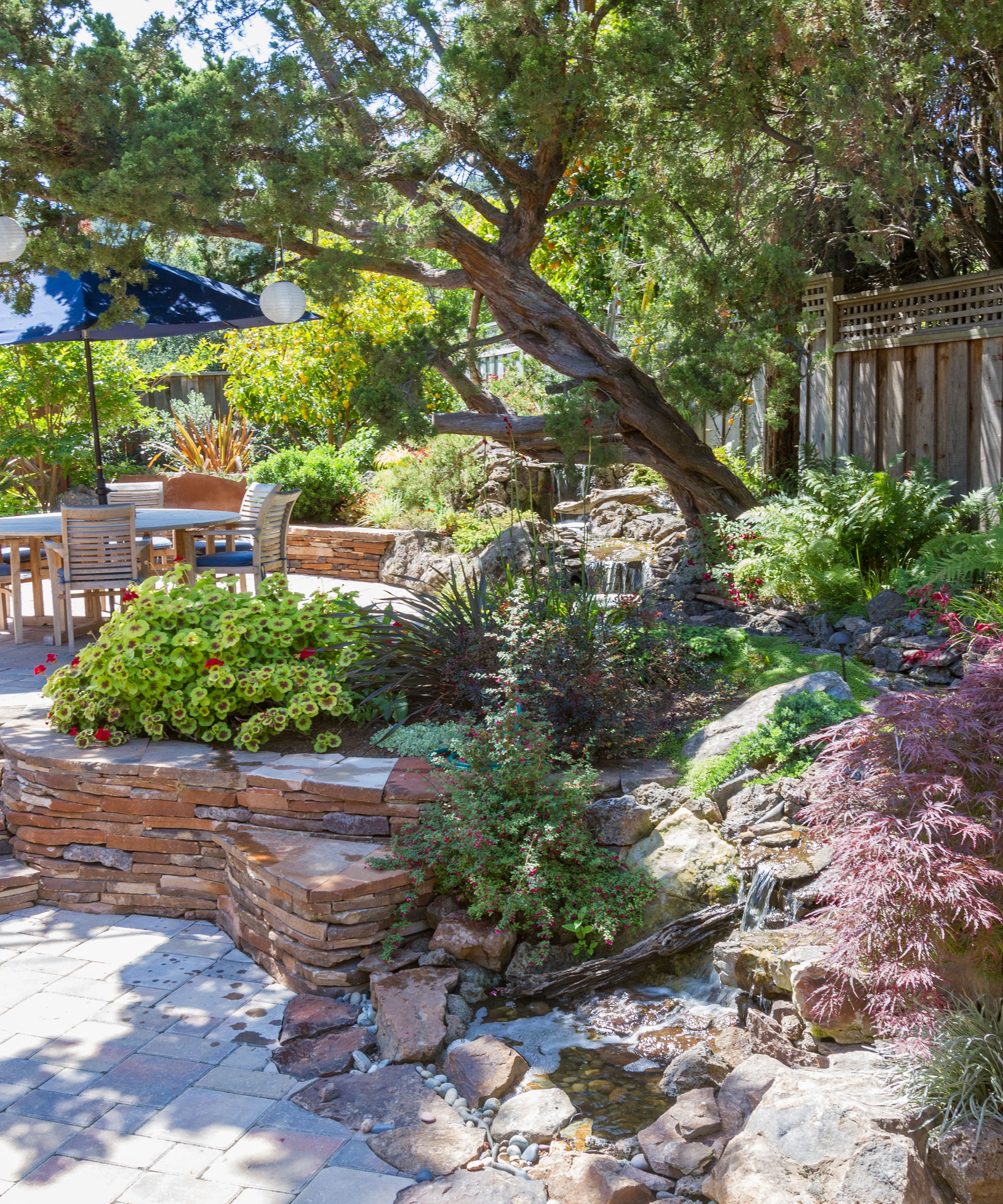
An empty triangular plot all on one level is dull! Devoid of interest and dominated by boundaries that meet at an angle, there is little to invite you into the space and spend time there.
Solve the issue by introducing different levels – these could be in the form of planted borders, ornate screens, hedges or stone walls – they’ll instantly obscure the view creating intrigue, depth and a sense of discovery.
Get creative with your choice of plants and materials and be artful with your placement of paths and patios. Avoid straight paths or walls that lead directly down the length of the garden. Instead work with curving beds and borders and create changes in level across the width of the plot.
Be careful to stagger access points such as steps, pathways and stepping stone so they meander throughout the triangular space rather than line up corridor fashion, as this will appear too harsh and unsettling.

Stacilyn Feldman is a Principal at Oehme, van Sweden in Washington, DC. She has designed, managed, and shepherded over a decade’s worth of the firm’s landmark projects including green roofs, urban development, botanic gardens, and residential estates. Stacilyn holds a Bachelors of Landscape Architecture from The Pennsylvania State University.

Joe Raboine is the Vice President of Design at Oldcastle APG, the parent company of Belgard. He collaborates with both sales and marketing to ensure that Belgard’s contractors and dealers are receiving best-in-class service, products and experiences. To that end, he often hosts webinars, assists with training events and trade shows, and presents at Belgard Universities and other industry events on current topics such as design trends, product innovations and industry best practices. As part of his role, he also oversees the Belgard Design Studio team.

A Virginia native, Andrea Scharffgrew up surrounded by some of the nation's most beautiful and historic gardens. After working in the tech industry for Fortune 500 companies she realized she preferred to be out in the garden. After studying Landscape Design at the New York Botanical Garden she started her landscape firm in LA 20 years ago. Andrea Scharff Landscape Design specializes in residential and commercial landscaping. Her designs have recently been featured in Sunset Magazine, The Los Angeles Times Homes Styles Section, and Luxe Magazine.
Now you have plenty of insight on how to handle your awkward shaped plot, the next step is to rework your space. From discovering how to make a courtyard garden look bigger to how to make the most of a side yard there are plenty more transferable design tricks to delve into and try.
Design expertise in your inbox – from inspiring decorating ideas and beautiful celebrity homes to practical gardening advice and shopping round-ups.

Journalist Jill Morgan has spent over 20 years writing and editing gardening, interior and property features. Titles she has worked on include The English Home, House Beautiful, Ideal Home, Houzz and Modern Gardens and she writes regularly for H&G as a Contributing Editor. Whilst she is a dab hand at renovation projects and DIY, she is happiest when out digging in the garden or planning a new border.
You must confirm your public display name before commenting
Please logout and then login again, you will then be prompted to enter your display name.